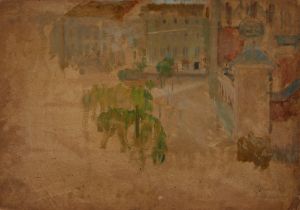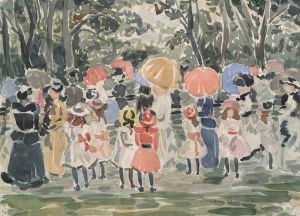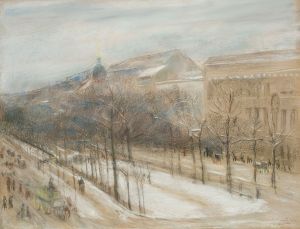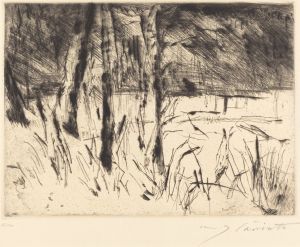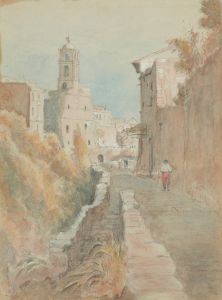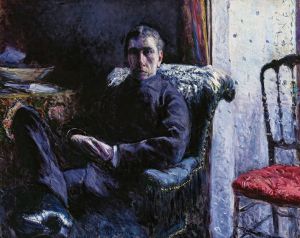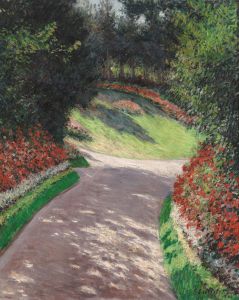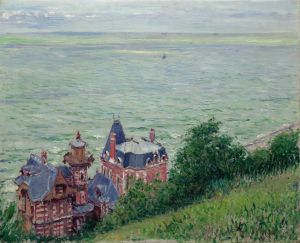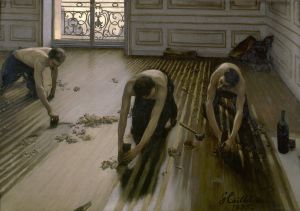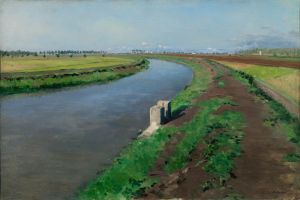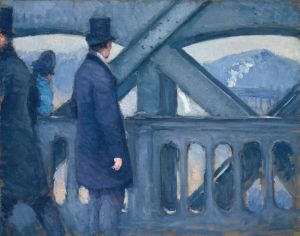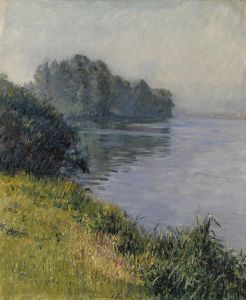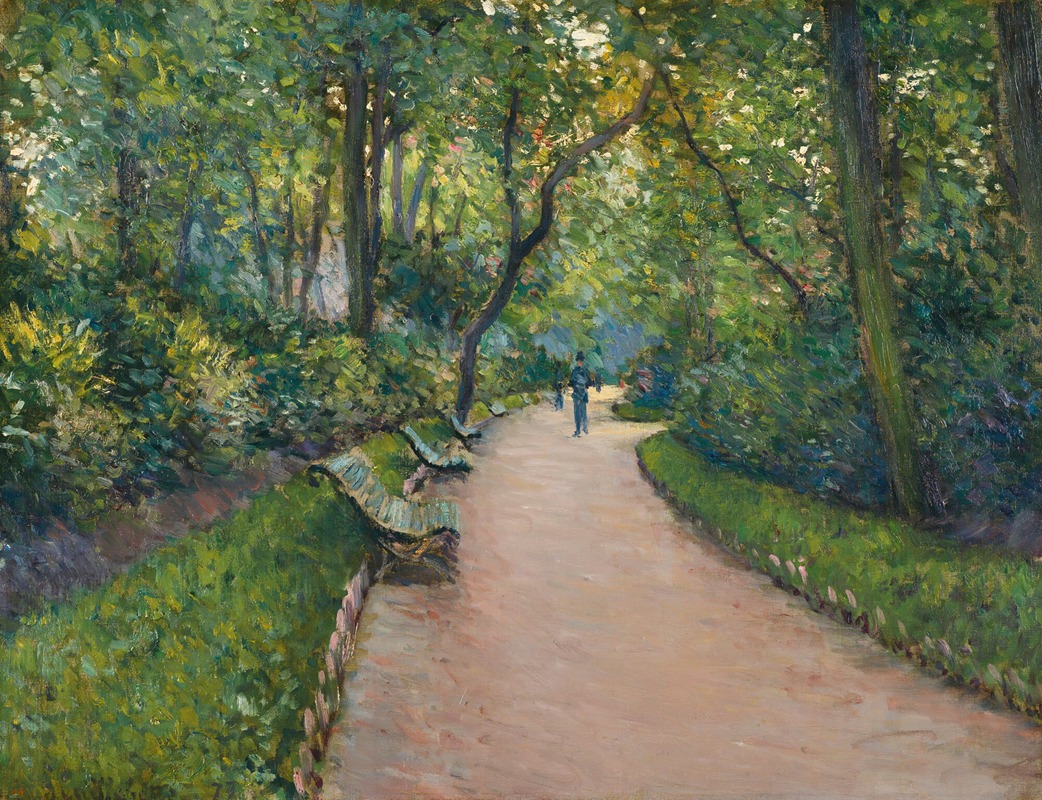
Le Parc Monceau
A hand-painted replica of Gustave Caillebotte’s masterpiece Le Parc Monceau, meticulously crafted by professional artists to capture the true essence of the original. Each piece is created with museum-quality canvas and rare mineral pigments, carefully painted by experienced artists with delicate brushstrokes and rich, layered colors to perfectly recreate the texture of the original artwork. Unlike machine-printed reproductions, this hand-painted version brings the painting to life, infused with the artist’s emotions and skill in every stroke. Whether for personal collection or home decoration, it instantly elevates the artistic atmosphere of any space.
Gustave Caillebotte's painting "Le Parc Monceau" is a notable work by the French Impressionist artist, created in 1878. Caillebotte, known for his detailed and realistic style, was a key figure in the Impressionist movement, although his approach often differed from the more loosely painted works of his contemporaries. "Le Parc Monceau" exemplifies his unique blend of realism and impressionism, capturing a serene moment in one of Paris's most picturesque parks.
Parc Monceau, located in the 8th arrondissement of Paris, was a popular leisure spot for Parisians in the 19th century. It was originally established in the late 18th century by Philippe d'Orléans, Duke of Chartres, and designed by the artist and architect Louis Carrogis Carmontelle. The park is known for its English-style landscape garden, which includes a variety of architectural features such as a miniature Egyptian pyramid, a Roman colonnade, and a Chinese fort. These eclectic elements made it a unique and fashionable location for Parisians seeking relaxation and inspiration.
Caillebotte's painting captures the essence of a leisurely afternoon in this urban oasis. The composition of "Le Parc Monceau" is characterized by its meticulous attention to detail and the use of light and shadow to create depth and atmosphere. The painting depicts a tree-lined path within the park, with figures strolling along the walkway. The figures are dressed in the contemporary fashion of the time, reflecting the social customs and attire of the late 19th century. The dappled sunlight filtering through the trees adds a dynamic quality to the scene, highlighting Caillebotte's skill in rendering natural light.
Unlike many of his Impressionist peers, Caillebotte often employed a more structured and precise technique, which is evident in "Le Parc Monceau." His brushwork is controlled and deliberate, capturing the textures of the foliage and the fabric of the clothing with remarkable clarity. This attention to detail sets Caillebotte apart from other Impressionists, who typically favored a more spontaneous and fluid approach.
"Le Parc Monceau" reflects Caillebotte's interest in modern urban life and his ability to convey the quiet elegance of Parisian society. The painting is also indicative of his fascination with perspective and composition, as seen in the way he leads the viewer's eye through the scene with the receding lines of the path and the alignment of the trees.
Caillebotte's work, including "Le Parc Monceau," was not widely recognized during his lifetime, as he was overshadowed by more prominent figures like Claude Monet and Pierre-Auguste Renoir. However, his contributions to the Impressionist movement have gained greater appreciation over time. Today, Caillebotte is celebrated for his unique perspective and his ability to capture the subtleties of modern life with both precision and sensitivity.
"Le Parc Monceau" is part of the collection at the Musée Marmottan Monet in Paris, where it continues to be admired by art enthusiasts and scholars alike. The painting remains an important example of Caillebotte's artistic legacy and his contribution to the development of Impressionism. Through works like "Le Parc Monceau," Caillebotte offers a glimpse into the tranquil beauty of 19th-century Parisian parks and the leisurely pursuits of its inhabitants.





